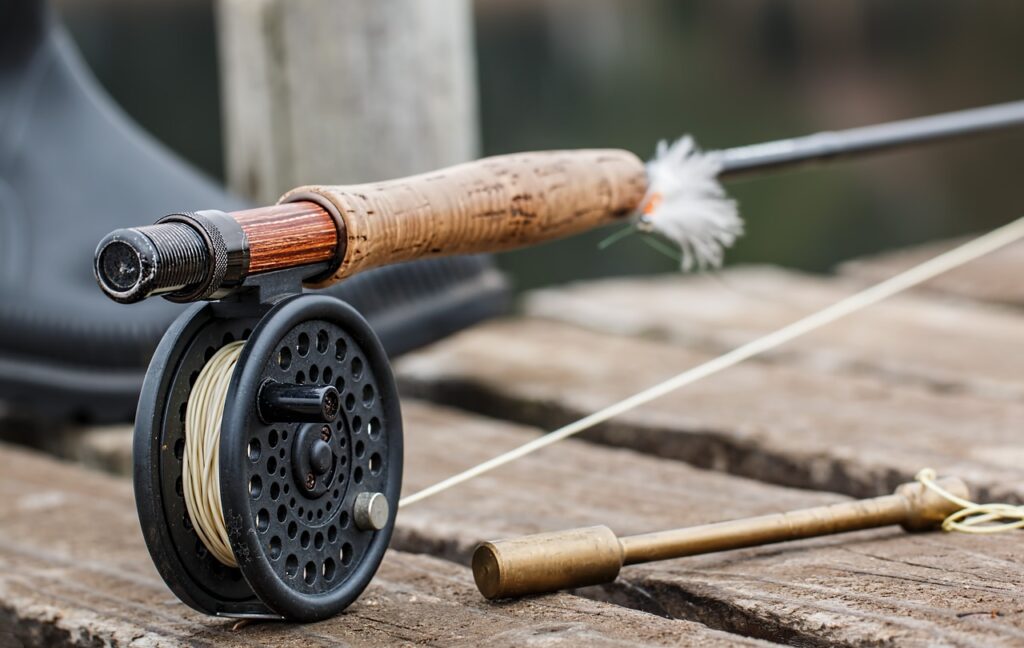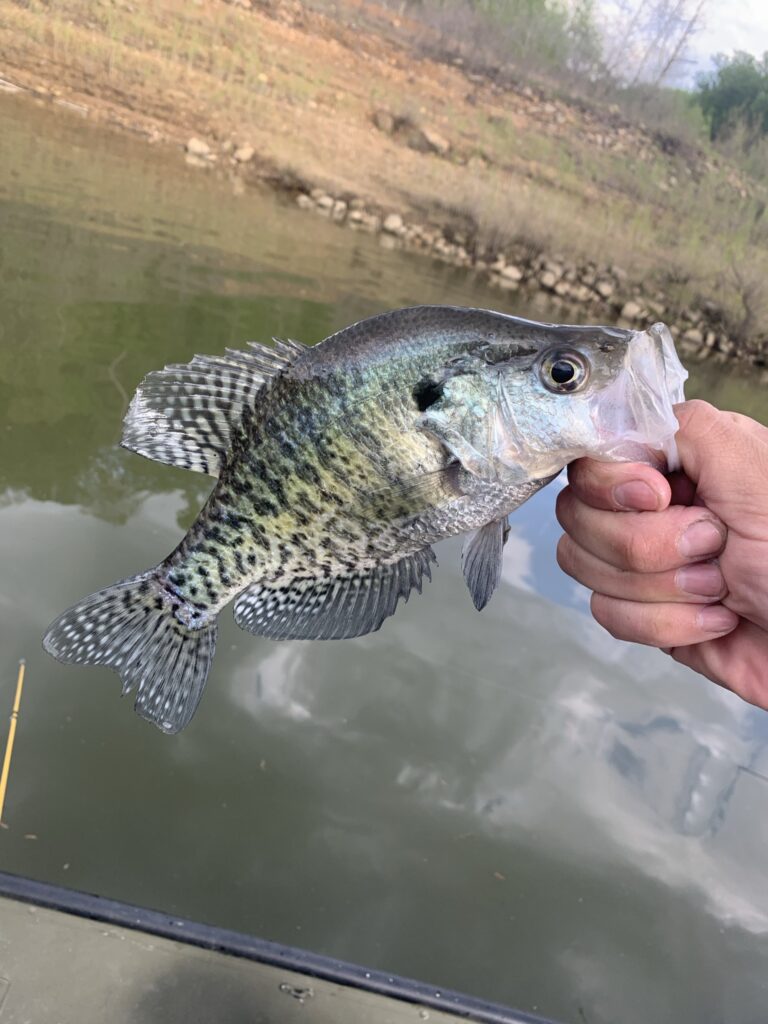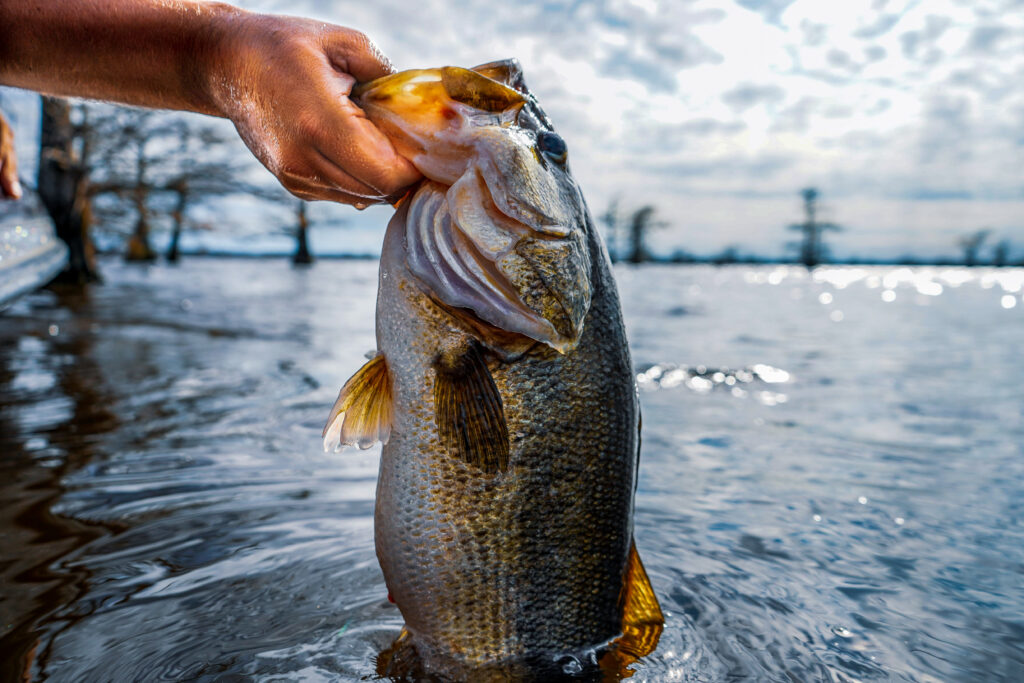First things first, we aren’t throwing tiny lures to catch flies. We are throwing flies to catch fish! Fly fishing is a wonderful way to catch fish. We have all seen the amazing pictures of an angler casting a fly rod across a rocky stream with gorgeous mountains in the background.
Most people think of fly fishing as a work of art that they would never be able to pick up on. Some would think that this sport is a complex and technical skill that takes years of practice. Therefore, they never pursue it. They just stick with the spinning real.
I’m here to tell you that’s not the case. Although some tactics in fly fishing can certainly be complex, it isn’t as hard as it looks. If you’ve never tried fly fishing, you are missing out!
In this post, I want to break down the basics and try to help you make sense of this whipping and flipping fancy sport!
The Concept of Fly Fishing
Let’s establish how fly fishing works and why its done.
In fly fishing, we are trying to present a lure to the fish that simulates a fly. And not just any fly, we typically present the fish with a dead fly! Although streamers can be used to look like a minnow, they are just a small portion of the fly fishing world. Typically, we are trying to simulate a dead fly.
To be effective with fly fishing, the fly should float naturally down the stream. We call this, the dead drift. A huge advantage of fly fishing is that with this lightweight tackle and being close or on top of the water surface, we can fish some pretty shallow water. This gives fly fishing the upper hand when it comes to mountain streams, which are my favorite!
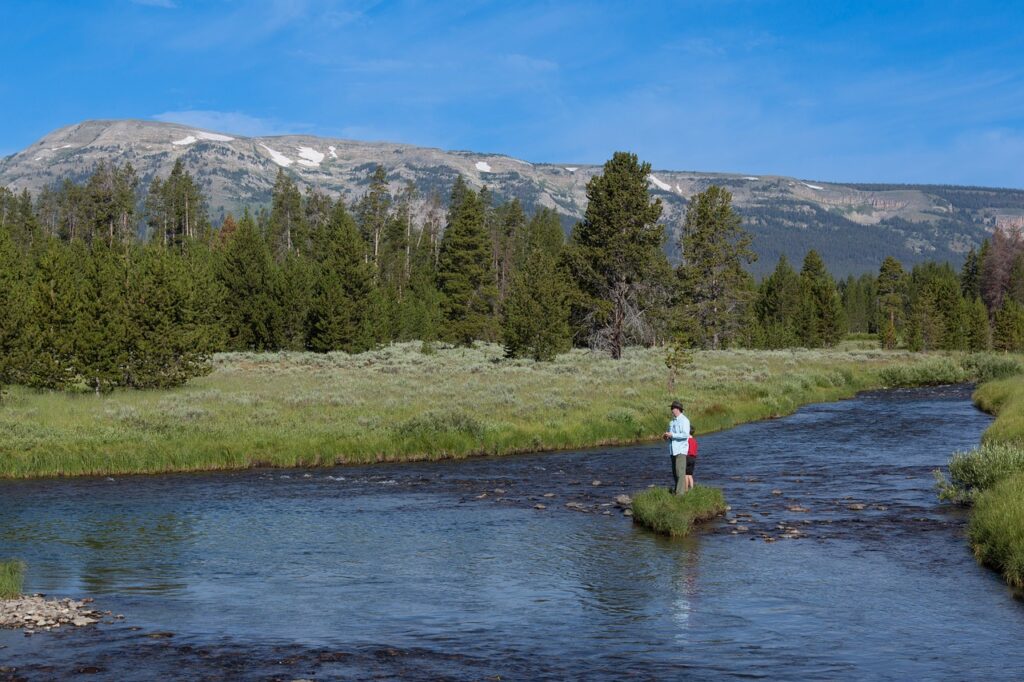
Fly Fishing equipment
When it comes to learning to fly fish, there is a simple rule that you need to understand and never forget. We are casting the LINE not the LURE! For someone who grew up using a closed face reel, this will be hard to get used to. We will talk more about this in the next segment.
Since we’re casting the line, and not the lure, we need a line that is designed for this. We also need a rod with the right action to flip the line correctly. Hence the need for a FLY ROD and FLY LINE.
Here are some other things you will need.
- A variety of flies
- A small rubber net
- Waders or wading shoes (Or both, continue reading)
- Nail clippers or scissors
- Dry fly (Basically Vaseline)
- Consider buying a fanny pack or vest for all the small items
- Tippet (Extra line. Clear)
Click here to find all the gear you need.
Fly rods and reels can be extremely expensive. Start cheap and eventually you will fall in love with this enough to upgrade. The rest of these items can be picked up at low cost as well.
The flies
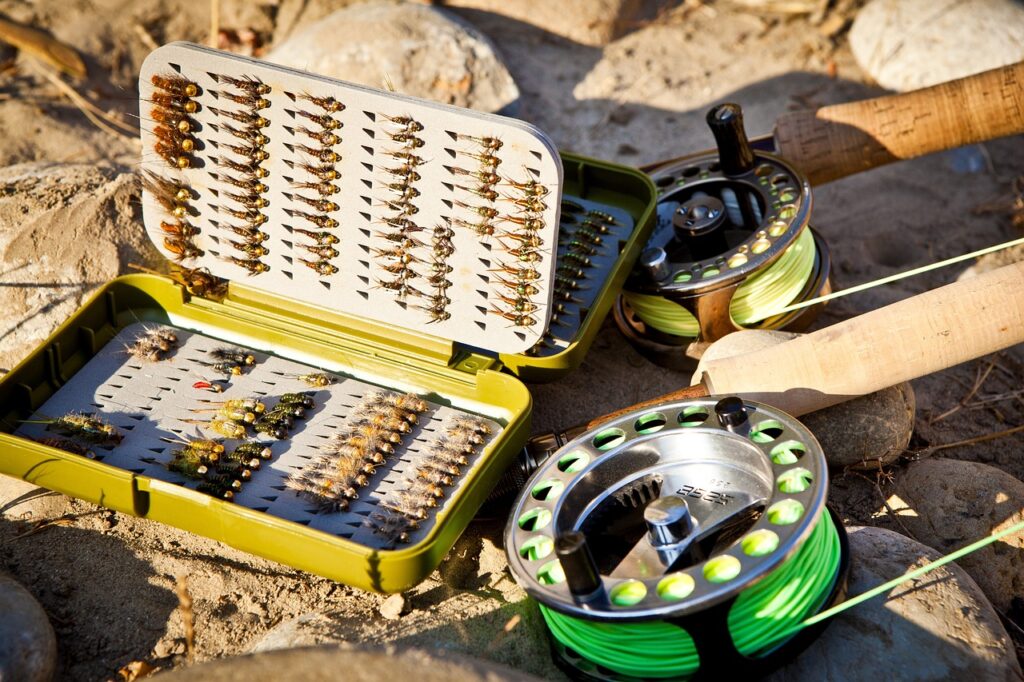
There are basically two types of flies for moving shallow water. These are Dry Flies and Nymphs. The difference between these two is that dry flies are made to float on the surface of the water and Nymphs are made to sink. Both types of flies serve different purposes and require different methods of presentation. Dry flies and nymphs should be in every tackle box and will need to be used in different water conditions and different seasons.
A dry fly floating on top of the water is meant to simulate a dead bug that has hatched and fallen into the water and ended up getting swept away in the current, only to be eaten by a fish.
A nymph simulates a different category of bug or fly that would typically sink, or even hatch from underneath submerged rocks only to end up somewhere in the water column and again, eaten by a fish.
Fish are always looking for food in the current. If you present one of these by drifting through a pool, it will be natural for the fish to eat it.
Fly Fishing rigs
Dry flies and nymphs are always tied to a clear leader. The fly line is thick and heavy since it is designed for casting. To avoid spooking fish and be able to tie a tiny fly, we must have a clear leader. These are usually 6 to 9 feet long and tapered. Thus, the end that ties to the fly line is much heavier than the end that ties to the fly.
Now that we have a leader attached, we could choose between several different rigs.
- Single dry fly
- Single nymph
- Double or triple nymph
- Nymphs with an indicator (More or less a small bobber)
- Dry dropper (My Favorite)
Dry fly
The simplest way to start fly fishing is to simply throw a single dry fly. This is just a matter of throwing a dry fly into the current and watching for a fish to strike it on the surface.
Nymphing
Nymph fishing is typically done with an indicator or a bobber. However, fly fisherman would never call this a bobber. It’s an indicator. This allows the angler to see when he gets a strike on the nymph below the surface.
Some folks choose to throw nymphs with no indicator at all. This method is sometimes called “Euro nymphing”. It requires moving the rod with the current and watching the line for a strike. We will leave this for another post.
Dry Dropper
This is my favorite and in my opinion, it is the king of fly fishing rigs. To set this up you need a dry fly with a piece of tippet tied to the hook about 8 to 12 inches long and a nymph on the end. This gives you the best of both worlds. The dry floats on top and the nymph follows underneath.
With the dry dropper rig, you can watch for strikes directly on the dry fly, or watch for it to go under when they strike the nymph. The dry fly becomes your indicator.
Streamers
For large deep pools and slow-moving water, you can’t depend on the current to make the flies naturally present themselves to the fish. Therefore, in these areas, you may want to try a streamer. Streamers are designed to sink. They should be jerked or retreived to look like a minnow.
Streamers are a must-have in Indiana where I’m from, as most of our waters are deep and muddy. Therefore, they can be great for ponds and rivers to catch largemouth and smallmouth bass. These fish are a ball of fun to catch with a fly rod.
When I make my frequent trips to the mountain streams, the streamers stay at home. But that’s just me.
The Fly Fishing cast
Now that we have discussed the equipment and supplies, we need to talk about how to put the fly in the right spot. That will require a cast. If you think you’re going to fling the rod and try to cast a tiny fly across a river as you would with your Zebco, you’re wrong.
As I said before, fly fishing is all about casting the line, not the lure. Fly lines can be purchased in different weights. The line you purchase will be determined by what the rod can handle. If you have a 4-weight rod, you need to purchase a line that is ideal for a 4-weight rod.
When the rod and the line are sized correctly, it won’t be hard to get a fly across the river.
The secret
I want you to picture something. If you have an extension cord and you want to get the end of it across the yard, it wouldn’t be easy to just grab the end and throw it. It wouldn’t go very far, and it would end up in a pile. We don’t want a pile of fly line on the surface of the water. Fish don’t like it.
With that being said, if you know what you’re doing, you can flick the extension cord just right to get it to fly across the yard folding beautifully over itself ending up in a fully stretched position with one end in your hand and the other across the yard with no pile.
Good fly fishing practice
The best way to learn how to cast a fly rod is to practice with a piece of rope. Practice flipping the rope to get it to fold over itself with the opposite end lying in the yard as far as it can go. You won’t believe how fast you pick this up. You will be a fly fisherman in no time.
The back cast
One thing to consider is that however far we want to cast the line forward, we also need to have that much room behind us for the back cast. Part of making this all work correctly is giving the line time to stretch out behind us before we send it sailing forward. The more line we have out, the longer this will take.
If we send it forward before it has time to lengthen fully behind us, you will hear a whip-cracking sound and the line will pile up. Watch the line and figure out your timing.
Let the rod do the work
A fly rod is designed to send the line flying for you. All you need to do is gently swing the rod in the direction of the cast and STOP. If you swing all the way through, like you would with a typical casting rod, this isn’t going to work. It’s all about the abrupt stop.
If you have the rod and line sized correctly to each other, this will work effortlessly and you will basically be using the wrist to make small movements. When you gently swing the rod and make a sudden stop, the action of the rod will continue in the direction of the swing and it will send the line sailing beautifully across the stream.
Take fly fishing to the stream
Now that we have the gear and we know how to use it, it’s time to get fishing. Find your favorite stream and start wading.
You will want to find areas where fast water is moving into slower water. This could be a narrow spot between to rocks sending fast water into a deep long pool. Furthermore, it could be fast water moving around a large rock and creating slower-moving water behind the rock. We call these eddies.
Feeding fish
Fish typically feed in fast-moving water, not deep still pools. (I’m not talking about catfish or walleye). However, they like to be in water that won’t require much effort to remain in one spot. This is why they like to find eddies or hang out in a large pool with a fast-moving seam going through it.
Fish will look upstream and wait for the food to come to them. They watch the water and wait for that bug to come to them. It’s a good strategy. What you should do is walk or wade upstream, casting your line upstream and letting it dead drift back to you. A dead drift is letting the fly sit in the water naturally without us dragging it or manipulating it.
I think that’s enough for today. Get started and we will talk more. I have a feeling you’re going to love this.
Check out my journalling post here to sharpen your skills even more!

